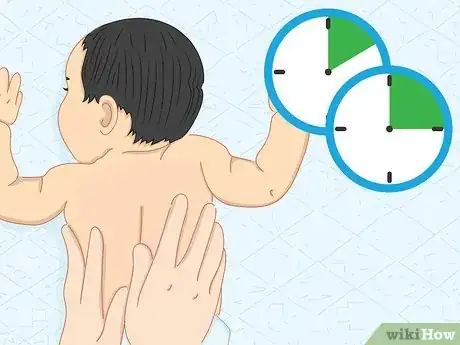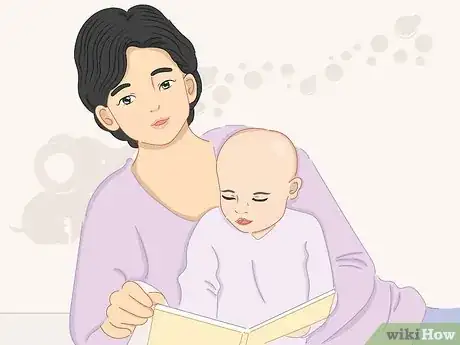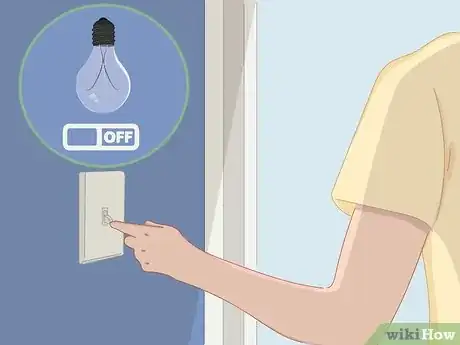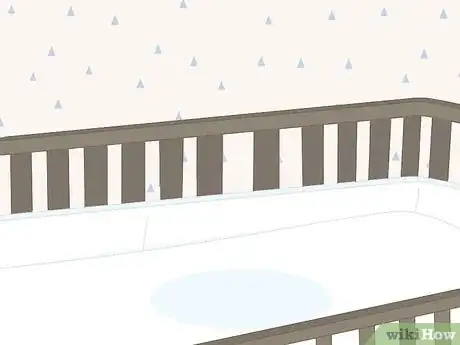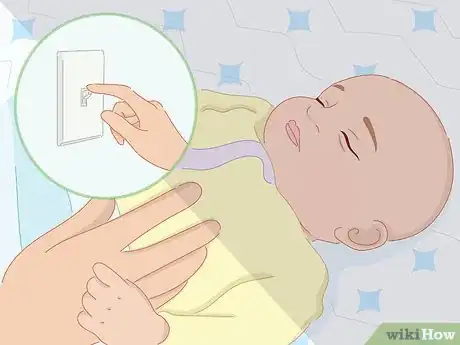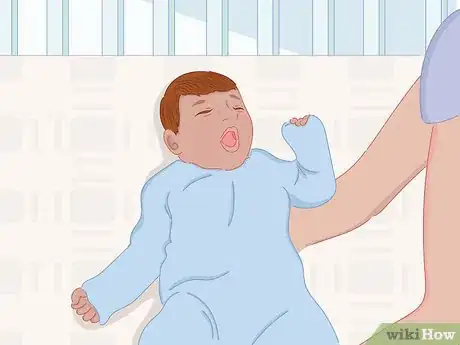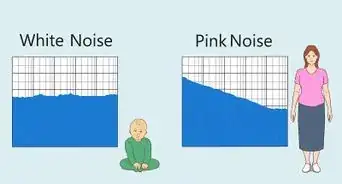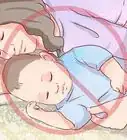This article was co-authored by Julie Wright, MFT and by wikiHow staff writer, Jessica Gibson. Julie Wright is a Marriage and Family Therapist and the co-founder of The Happy Sleeper, which offers sleep consulting and online baby sleep classes. Julie is a licensed psychotherapist specializing in babies, children, and their parents, and the co-author of two best selling parenting books (The Happy Sleeper and Now Say This) published by Penguin Random House. She created the popular Wright Mommy, Daddy and Me program in Los Angeles, California, which provides support and learning for new parents. Julie's work has been mentioned in The New York Times, The Washington Post, and NPR. Julie received her training at the Cedars Sinai Early Childhood Center.
There are 15 references cited in this article, which can be found at the bottom of the page.
wikiHow marks an article as reader-approved once it receives enough positive feedback. In this case, several readers have written to tell us that this article was helpful to them, earning it our reader-approved status.
This article has been viewed 569,541 times.
Is there anything more peaceful than a sleeping baby? Babies go through a lot of developmental stages, so it's no surprise that your baby might go through a phase where they're hard to put down. This is totally normal, but it can be stressful for you. To make your baby's bedtime easier on everyone, follow our suggestions for relaxing your baby and soothing them to sleep.
Steps
Expert Q&A
-
QuestionWhat are some recommendations to promote safe sleeping?
 Julie Wright, MFTJulie Wright is a Marriage and Family Therapist and the co-founder of The Happy Sleeper, which offers sleep consulting and online baby sleep classes. Julie is a licensed psychotherapist specializing in babies, children, and their parents, and the co-author of two best selling parenting books (The Happy Sleeper and Now Say This) published by Penguin Random House. She created the popular Wright Mommy, Daddy and Me program in Los Angeles, California, which provides support and learning for new parents. Julie's work has been mentioned in The New York Times, The Washington Post, and NPR. Julie received her training at the Cedars Sinai Early Childhood Center.
Julie Wright, MFTJulie Wright is a Marriage and Family Therapist and the co-founder of The Happy Sleeper, which offers sleep consulting and online baby sleep classes. Julie is a licensed psychotherapist specializing in babies, children, and their parents, and the co-author of two best selling parenting books (The Happy Sleeper and Now Say This) published by Penguin Random House. She created the popular Wright Mommy, Daddy and Me program in Los Angeles, California, which provides support and learning for new parents. Julie's work has been mentioned in The New York Times, The Washington Post, and NPR. Julie received her training at the Cedars Sinai Early Childhood Center.
Parenting & Baby Sleep Specialist The safest place for your baby to sleep is in their own separate space with nothing in it. That means no positioners, no incline, no bumpers, no blankets, and no pillow. The American Academy of Pediatrics also recommends that your baby should be in your room, but not in your bed.
The safest place for your baby to sleep is in their own separate space with nothing in it. That means no positioners, no incline, no bumpers, no blankets, and no pillow. The American Academy of Pediatrics also recommends that your baby should be in your room, but not in your bed.
References
- ↑ https://www.healthychildren.org/English/ages-stages/baby/diapers-clothing/Pages/Swaddling-Is-it-Safe.aspx
- ↑ https://healthywa.wa.gov.au/Articles/S_T/Sleep-6-months-3-years
- ↑ https://raisingchildren.net.au/newborns/health-daily-care/massage/baby-massage
- ↑ http://www.parents.com/baby/sleep/tips/best-baby-sleep-tips/
- ↑ http://www.wahm.com/articles/5-infant-massage-techniques-for-calming-your-baby-1.html
- ↑ https://sleepfoundation.org/sleep-news/lights-out-good-nights-sleep/page/0/1
- ↑ http://www.webmd.com/sleep-disorders/news/20110119/light-exposure-may-cut-production-of-melatonin
- ↑ https://kidshealth.org/en/parents/sleep13m.html
- ↑ https://www.babycentre.co.uk/a567532/my-baby-is-teething-at-night-how-can-i-soothe-her
- ↑ https://medlineplus.gov/ency/article/002392.htm
- ↑ Julie Wright, MFT. Parenting & Baby Sleep Specialist. Expert Interview. 6 March 2020.
- ↑ https://health.clevelandclinic.org/the-6-best-ways-to-make-your-baby-tired-and-3-things-not-to-do/
- ↑ https://raisingchildren.net.au/babies/sleep/understanding-sleep/tired-signs
- ↑ https://www.mayoclinic.org/healthy-lifestyle/infant-and-toddler-health/in-depth/baby-sleep/art-20045014
- ↑ https://www.sleepfoundation.org/baby-sleep/sleep-training
- ↑ https://sleepfoundation.org/sleep-news/lights-out-good-nights-sleep/page/0/1
About This Article
Before putting your baby to sleep, change their diaper and feed them so they are as comfortable as possible. Put the baby in some soft pajamas to keep them warm. After dressing your baby, you may find that rocking your baby, singing quiet songs, or bouncing your baby gently in your arms will help them relax. When your baby is starting to show signs of being tired, such as fussiness or droopy eyes, lay them down on their back in their crib. The American Academy of Pediatrics recommends that healthy babies be put to sleep on their backs to reduce the risk of Sudden Infant Death Syndrome (SIDS). If your baby is under 2 months old, you can swaddle them to imitate the cozy, confined feelings of the mother's womb, which many babies find relaxing. Stop swaddling them once they are more than 2 months of age since swaddling restricts the baby's movements. Once your baby is safely on their back inside their crib, turn off the lights and try turning on a fan or a white noise machine or app, which helps soothe babies and block out noises that can keep them awake. Keep in mind that no matter what you try, your baby is likely to wake up a few times during the night. They also might not be able to go to sleep when you put them down. If your baby is having trouble falling asleep, or getting back to sleep after waking up, try singing to them, rocking them in your arms, changing their diaper, feeding them again if they are hungry, or walking around the house, gently bouncing them, possibly while wearing them in a sling or carrier. To help your baby to sleep more easily, maintain a consistent routine, and start it at the same time each night. For more advice, including how to train your baby to sleep at the same time every night, keep reading.

